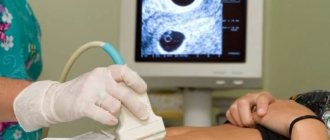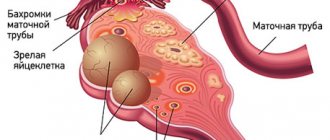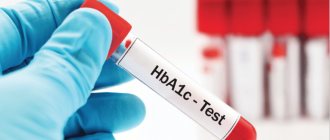When do you need to take a Gynecological smear test?
- If you suspect inflammatory changes in the urogenital tract or infection with sexually transmitted diseases
- Suspicion of a violation of the vaginal microflora (taking antibiotics, poor diet, wearing synthetic underwear, panty liners, etc.)
- As part of a comprehensive diagnosis during pregnancy (registration, at 30 and 37 weeks of pregnancy), before gynecological interventions (hysteroscopy, separate diagnostic curettage of the uterine cavity and cervical canal, operations on the uterus and/or uterine appendages, medical termination of pregnancy and etc.)
- For differential diagnosis between diseases of the reproductive (colpitis) and urinary systems (urethritis, cystitis)
- When pathological discharge from the genital tract appears (white, yellow, curdled, abundant, with an unpleasant odor, etc.).
Frequency of swab collection
According to the order of the Ministry of Health of the Russian Federation dated January 17, 2014, smears for the microflora of the urogenital tract are taken three times:
- the first time when a woman registers (usually in the 1st trimester);
- the second time before going on maternity leave (at 30 weeks);
- for the third time before childbirth, at the end of the 3rd trimester (at 36 weeks).
Additional smears are taken according to indications:
- pregnant woman's complaints of leucorrhoea, itching and burning;
- control of the treatment of vulvovaginitis confirmed by laboratory tests;
- threat of miscarriage or premature birth;
- polyhydramnios and oligohydramnios;
- history of miscarriage and frozen pregnancy;
- isthmic-cervical insufficiency;
- intrauterine fetal infection;
- Chorioamnionitis.
In some cases, PCR diagnostics using a smear is prescribed to detect sexually transmitted infections (chlamydia, ureaplasmosis, cytomegalovirus and others).
Detailed description of the study
A woman's genital organs are normally inhabited by many microorganisms. They create favorable physiological conditions and protect the genitals from pathogenic microorganisms. Between themselves, different types of representatives of normal microflora are in balance. A change in their quantitative ratio can lead to an imbalance in this balance: dysbiosis. It can occur due to hormonal disorders, failure to comply with personal hygiene rules, or taking antibiotics.
Dysbiosis can lead to inflammatory diseases of the vagina, uterus, its appendages, and ovaries. Without timely treatment of these diseases, the result may be the inability to conceive and pathologies of pregnancy.
Another common threat to reproductive health is sexually transmitted infections (STIs). The causative agents of some of them are microorganisms that can be reliably identified microscopically.
A flora smear is a microscopic examination of a scraping from a woman’s genitourinary tract (vagina, cervix, urethra). The study evaluates the following indicators, which indicate the composition of the microflora and the presence of inflammatory or infectious processes:
- Rod-shaped bacteria are a normal component of the vaginal microflora. If there are too few of them, we can assume dysbiosis or bacterial vaginosis - excessive reproduction of some representatives of the normal microflora.
- Mushroom elements. Normally, fungi can be part of the microflora, but in very small quantities. The presence of actively reproducing fungi of the genus Candida in the smear indicates candidiasis, in other words, thrush.
- Flat epithelium. These are the cells that line the inside of the genitourinary tract. They are constantly renewed: new ones grow, and old ones peel off and are removed. Such cells should be present in the smear. If there are very few or none at all, this may indicate atrophy or estrogen deficiency/excess testosterone. If there is too much, most likely inflammation has developed there.
- Key cells are the same epithelial cells, but surrounded by bacteria (most often gardnerella). Their presence indicates bacterial vaginosis.
- Slime. Should be present in the smear in moderate quantities. If there is too much or too little, inflammation can be assumed.
- Leukocytes (immune cells). Their presence indicates an inflammatory reaction.
- Trichomonas and gonococci are the causative agents of STIs. Normally they should not be present in the smear.
Each of these indicators is assessed separately for each part of the genitourinary tract (cervix, urethra and vagina). If any deviations from the norm are detected, it will be reliably known where the inflammation or infection occurred.
Lactobacilli, DNA Lactobacillus spp.
Lactobacilli, DNA Lactobacillus spp., quality
— DNA determination of Lactobacillus spp.
in a scraping of the urogenital tract, using the polymerase chain reaction (PCR) method with real-time detection. PCR method
allows you to identify the desired section of genetic material in a biological material and detect single DNA molecules of a microorganism that are not detected by other methods. The principle of the method is based on a multiple increase in the number of copies of a DNA region specific to a given pathogen.
Using PCR analysis, it is possible to diagnose infection in the acute period and identify cases of carriage.
Lactobacilli
- a genus of gram-positive anaerobic non-spore-forming lactic acid bacteria, which are representatives of the obligate (which cannot exist outside) bacteriocenosis of a healthy person. Lactobacilli account for about 10% of normal flora. They dominate in young children.
In women of reproductive age, the normal flora of the vagina is represented mainly by 5–6 species of Lactobacillus spp., which form the basis of the microbiocenosis.
The number of lactobacilli in the vagina of a healthy woman varies from 10*5 to 10*9 CFU/ml, which is from 90 to 99.9% of the total vaginal microflora.
Lactobacilli have a significant effect on metabolic processes, provide the human body with vitamins B, C, K, nicotinic and folic acids, biotin, produce amino acids, lactic, acetic and other organic acids, antibiotic and hormone-like substances, hydrogen peroxide, L. fermentum No. 90T-C4 produces endogenous lysozyme.
Vaginal dysbiosis
Severe vaginal dysbiosis (disturbance of the normal vaginal microflora) is a state of microbiocenosis characterized by a significant decrease in the proportion of lactobacilli (less than 20% of all isolated microorganisms) or their complete absence. Detection of a low content of lactobacilli in itself is not a basis for concluding the presence of any disease associated with a violation of the microflora composition, but indicates its high probability and requires confirmation based on the results of analysis of clinical data and/or identification of opportunistic bacteria in concentrations of diagnostic significance.
Indications:
- preventive examination;
- pregnancy examination;
- suspicion of dysbacteriosis;
- monitoring the adequacy of prescribed treatment.
Preparation
The contamination and species composition of the studied biotope of the woman’s urogenital tract depends on the phase of the menstrual cycle.
- It is advisable to conduct examinations of women in the first half of the menstrual cycle, not earlier than the 5th day. Examination in the second half of the cycle is acceptable, no later than 5 days before the expected start of menstruation;
- if there are severe symptoms of inflammation, the material is taken on the day of treatment;
- the day before and on the day of the examination, the patient is not recommended to douche the vagina;
- It is not recommended to take biomaterial against the background of antibacterial therapy (general/local), the use of probiotics and eubiotics, earlier than 24–48 hours after sexual intercourse, intravaginal ultrasound and colposcopy;
- if a scraping is taken from the urethra for research, the material is collected before or no earlier than 2–3 hours after urination.
Interpretation of results The answer is given in a qualitative format: “detected” or “not detected”.
Beta-lactams
The drugs of choice for the treatment of staphylococcal infections (caused by both Staphylococcus aureus and coagulase-negative staphylococci) are beta-lactam antibiotics, therefore, it is first necessary to determine the sensitivity of staphylococci to these drugs.
Resistance of staphylococci to beta-lactam ABPs is associated either with the production of beta-lactamases or with the presence of an additional penicillin-binding protein, PSB2a. Identifying and differentiating these two resistance mechanisms makes it possible to reliably predict the activity of all beta-lactam antibiotics without directly assessing sensitivity to each of these drugs. In this case, it is necessary to take into account the following patterns:
- Strains of Staphylococcus spp., lacking resistance mechanisms, are sensitive to all beta-lactam ALDs.
- Beta-lactamases (penicillinases) of Staphylococcus spp. capable of hydrolyzing natural and semi-synthetic penicillins with the exception of oxacillin and methicillin. Sensitivity or resistance to benzylpenicillin is an indicator of the activity of natural and semi-synthetic amino-, carboxy- and ureidopenicillins. The remaining beta-lactams with potential antistaphylococcal activity (antistaphylococcal penicillins, cephalosporins of I, II and IV generations and carbapenems) retain activity against beta-lactamase-producing strains.
- Strains of Staphylococcus spp possessing PBP2a are clinically resistant to all beta-lactam ALDs. A marker for the presence of PSB2a is resistance to oxacillin and methicillin. Such strains have historically been called methicillin-resistant Staphylococcus spp (MRSS). Other terms for such strains are MRSA - methicillin-resistant S.aureus and MRSE - methicillin-resistant S.epidermidis.
- Methicillin is currently not used in clinical practice and in laboratory diagnostics; it has been almost completely replaced by oxacillin, and accordingly the term “oxacillin resistance” has appeared, which is a complete synonym for the term “methicillin resistance”.
Thus, testing the susceptibility of Staphylococcus spp. for beta-lactam ABPs should include two tests:
- Determination of sensitivity to benzylpenicillin or detection of beta-lactamase (penicillinase) production.
- Determination of sensitivity to oxacillin or detection of PBP2a or the mecA gene encoding it.
Evaluation and interpretation of smear results
Indicators of smear analysis (in the vagina, cervix and urethra):
1. Leukocytes. The normal content of leukocytes in the vagina does not exceed 15 in the field of view, in the cervical canal up to 30, and in the urethra no more than 5. A large number of leukocytes is a sign of an inflammatory process. As a rule, an increased number of leukocytes in a “pregnant” smear is accompanied by one of the diseases listed above. Therapy is not aimed at reducing the level of leukocytes, but at eliminating the cause of its increase.
2. Epithelium (squamous epithelium that forms the upper layer of the mucosa). The number of epithelial cells in the genital tract and urethra should not be higher than 5-10 in the field of view. A large amount of epithelium indicates inflammation. Treatment is also carried out in the direction of eliminating the cause of the increase in epithelial cells.
3. Bacteria (mainly rods).
- Normally, the smear contains Gr(+) - gram-positive bacteria, 90% of which are lactic acid bacteria or Doderlein bacilli.
- Gr(-) – bacteria indicate pathology.
- Lactobacilli are found only in the vagina; they are absent in the urethra and cervical canal.
4. Slime. A moderate amount of mucus in the cervix and vagina, the absence of mucus in the urethra is a sign of a normal smear. When mucus is detected in the urethra or the presence of a large amount of it in the genital tract, inflammation is suspected.
5. Cocci. A small amount of cocci in the vagina is allowed (streptococci, staphylococci, enterococci); an increase in their content in the genital tract indicates nonspecific vaginitis. Detection of gonococci in smears is a sign of gonorrhea.
6. Key cells. Key cells are an accumulation of pathogenic and opportunistic microorganisms (gardnerella, mobilincus, obligate anaerobic bacteria) on desquamated squamous epithelial cells. The detection of key cells indicates bacterial vaginosis, so normally they should not be present.
7. Yeast-like fungi (genus Candida). A small amount of yeast-like fungi is normally allowed in the vagina; they are absent in the urethra and cervical canal. If there is a high content of fungi in the vagina, a diagnosis of candidiasis colpitis (thrush) is made.
8. Trichomonas. Normally, Trichomonas are absent in smears from the vagina, cervix and urethra. The detection of trichomonas indicates trichomoniasis.









